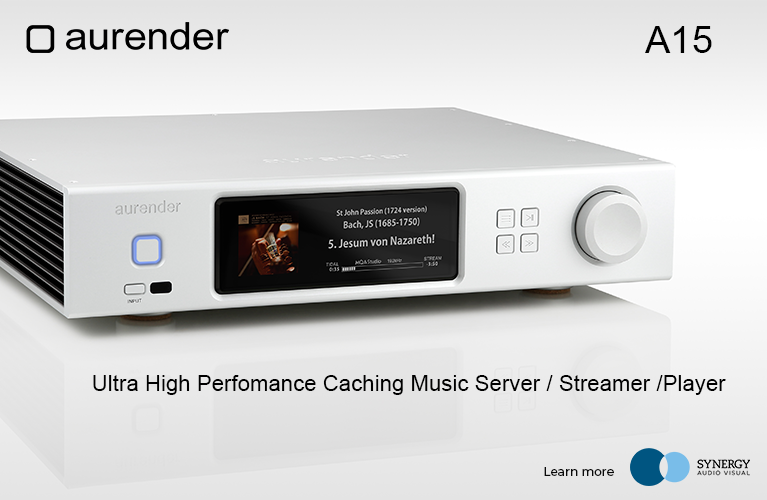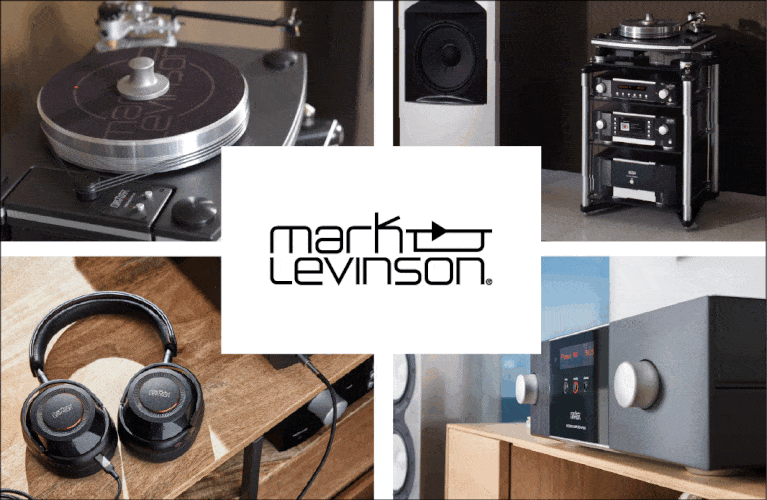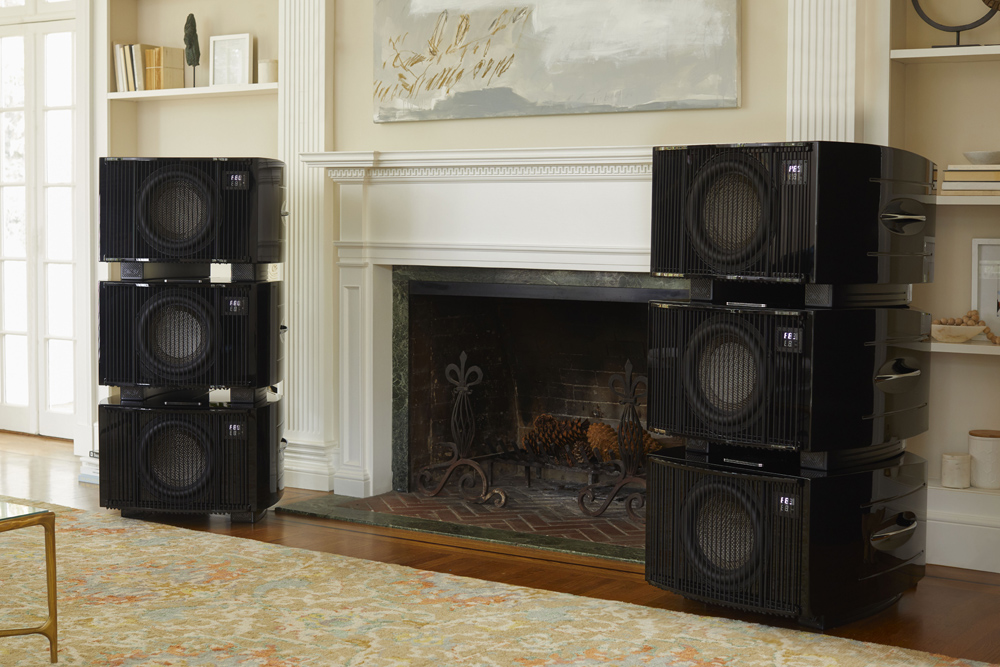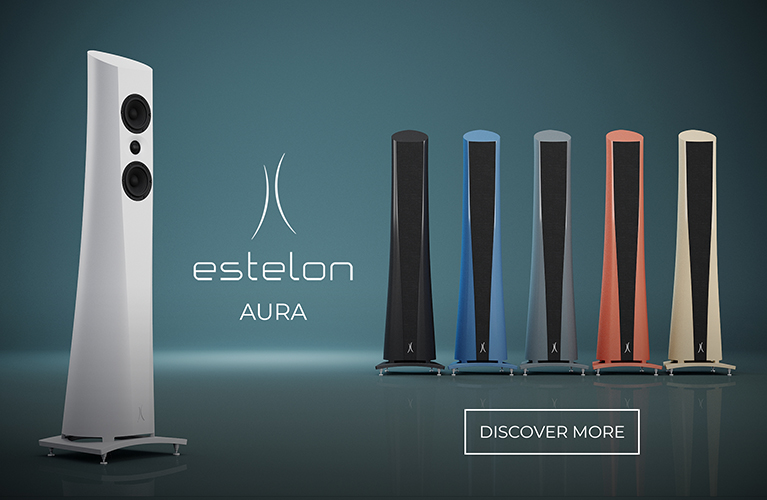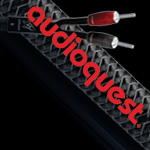The world of subwoofers is often somewhat muddied by the fact that subs seem to be viewed as both an afterthought, or add on, to “more desirable” components, or indeed be completely misunderstood with regards to their function, and the overall expected outcome, from their integration to a hi-fi system. Let’s clear up some of the myths, perceptions, and questions, and dig a little deeper into the REL Acoustics No.31 realm of sub bass.
Good Lord!
REL Acoustics was founded in 1990, by Richard Edmond Lord, a man on a mission to produce the world’s best subwoofers, after being consistently disappointed with the results achieved from the available offerings at the time. Keep in mind, that subwoofers had only come into effect as practical tools in the 1970s after initial designs such as Raymon Dones’ “The Octavium” had been produced in the 60s, and used by acts such as the Grateful Dead and the Pointer Sisters. Then there was the SS-1 from Infinity, as well as products from Miller & Kreisel Sound Corporation from Los Angeles in the late 60s.
Until the 1950s, 100 Hz was about the lowest frequency reproduction you could achieve in practical use, with a single 8-inch speaker used in a straight horn, for motion pictures when they evolved from the silent era. These solutions were obviously not sufficient, and in 1933, the head of sound for MGM, Douglas Shearer, collaborated with John Hilliard and James Lansing to produce a two-way enclosure with a W shaped bass horn that eventually went as low as 40 Hz. Lansing of course founded Altec Lansing in 1941 and JBL in 1946.
There were, and still are, of course, some limitations with producing low frequencies, while using a turntable and having to deal with the potential feedback, rumblings and the associated frustrations with feedback and distortion from an open-ended system, but as soon as compact cassette and CD arrived on the scene, the potential for recreating greater extension in the low end of the audio spectrum in a domestic environment became much more accessible.
The very first use of a subwoofer in producing records (that I know of) was in 1973 for mixing Pretzel Logic, by Steely Dan, with Roger Nichols having the prototype of the subwoofer designed by Kreisel and brought to Village Recorders. Subsequent improvements were then made to the crossover network over the following decade. Subs really garnered a lot of attention when the 1974 movie “Earthquake” was released in ‘Sensurround’ with Cerwin-Vega systems comprising of large subwoofers and racks of 500 watt amplifiers. The number of theatres with ‘Sensurround’ installed went from 17 to 300 in around two years.
Subs quickly evolved from merely a theatrical thrill in cinemas, to providing awe inspiring disco and reggae reproduction, with 12-inch singles in the mid 70s allowing more bass to be applied to recordings.
One such famous venue to explore the use of subs was The Loft in NYC, owned by David Mancuso, and it was driven by the need to fully flesh out that deep bass drum in disco music, leading to a third crossover point at 40 Hz to 120 Hz.
Subwoofers really began to evolve now, with house music and reggae inspiring even more custom systems, with sophisticated and articulate extension below 100 Hz. The complexities of some systems to handle extreme SPL levels and extension down to “infra-bass” frequencies at 20 Hz had developed into global rivalries, with Ministry of Sound famously spending half a million pounds in 1991, on a Martin Audio system, with 12 21 inch, 9500 watts, active subwoofers, 12 18 inch subs, and twelve Martin Audio W8C mid/high speakers. That was a truly “ground-breaking” investment.
Let’s Go Deeper!
So where does that leave us in the world of Hi-Fi? Do subs just produce mighty amounts of bass to move a dancefloor, or thrill movie goers at the theatre? The answer is no. The experience you may have with a subwoofer depends on your understanding of the way a subwoofer works, the room in which it is being deployed, and the care taken to integrate the sub/s into the overall holistic experience gained from the components working in unison. Or, more importantly, the way the speakers and subs are positioned, and integrated from a crossover perspective. There are multiple things to consider with regards to a subwoofer’s involvement, those being the cabinet design, the compatibility with your speakers, the SPL required for the room, and the amplification of the subwoofer itself, whether that be external or active.
Exhausting right? We haven’t even started. What about the ability of the sub to produce frequencies across its spectrum of reproduction without a huge drop-off at the lower levels? A 4dB difference in output is a big one. Many people will look at how far the sub extends to lower frequencies, without considering the size of the driver the power needed to move that driver in a bigger magnet, and the size of the box required to house all of that and produce the frequency response required. It’s way more complex than you might think. A poorly designed cabinet, with a lack of real-world power, and a bad damping factor, with a poorly chosen crossover point, will ruin the listening experience. That often leads to the typical audiophile split camps, where some people swear that their speakers are “perfect” and subs are simply not required, and they are purely for the home theatre world.
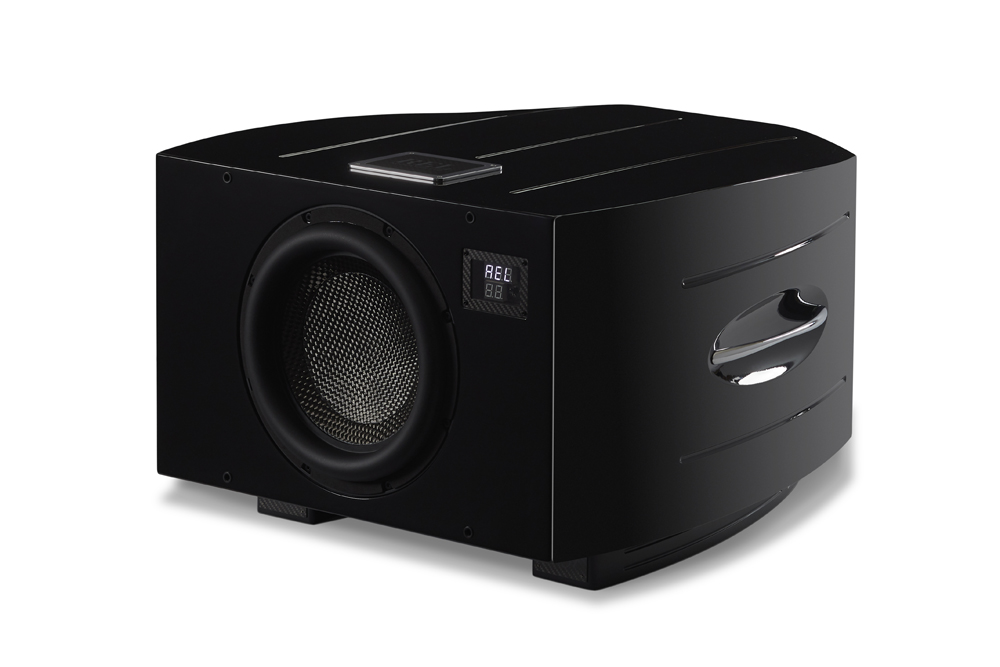
This simply is not the case. Any concert you attend now, will have a vast array of subwoofers, all carefully integrated into a well-designed system, carefully tuned to the room it is placed in and, most often, delivering awe inspiring reproduction. This should be no different at home, the key factor being “carefully-integrated”.
So where do we start, and why REL Acoustics? Well, there are many reasons why REL is respected so much in the world of sub-bass, one being the approach to using a high-level input to drive the subs. What’s that I hear you say? Well, the high level input is a simple way to take a feed from the speaker outputs of your integrated, or power amplifier, and to feed a second set of cables from that output, to the subwoofers via a Speakon type connector (sometimes also known as speakON), which in turn feeds the subs the same signal as the speakers are getting, with the same tonal quality, then attenuated within the sub’s electronics architecture, fed to the amps within the sub, and then output as quickly as possible to minimise any latency.
Most active subs simply take an unbalanced or balanced audio signal from the preamp or tape/monitor section of an amp, or in the case of home theatre or lower-budget amps, you may find yourself using a single LFE input. This isn’t ideal for high quality audio playback.
We could talk about the technicalities of this for days, but I feel we will run out of pages on the internet! So, let’s delve into the REL No.31.
What makes this unit so special? Well, I have a few subs around my house, and for many years I was truly an advocate of 2.0 systems, well curated components, and a simple setup, with a home theatre setup being a separate affair. As subwoofer technology and design has evolved, my experience has changed dramatically. As a sound engineer, I have been employed behind systems both in studio and live environments, where subs have been essential. Yet, at home it wasn’t always the case.
Whether the placement wasn’t right, or the subwoofer just couldn’t deliver the goods, something always seemed to trouble me with the overall “experience.”
I more recently had a pair of REL HT/1205s in my systems for almost a year, and although they were good performers, delivering 500 watts each with 12 inch carbon drivers, and REL’s PerfectFilters, they often seemed to be a little aggressive, or perhaps deliver some unwanted artefacts that caught my attention while listening. So, I’d go back to fiddling with the crossover frequency and output levels, never quite finding a balance for all of my music choices. To be fair, these little subs punch way above their weight, but sometimes, just sometimes, they would tell me something wasn’t quite in the pocket.
If you have a room that is ultimately articulate for placement, then using the crawl test to place your subs is the best way to get started, but that is not always possible at in-home environments, and finding something that is friendly to the room can be difficult.
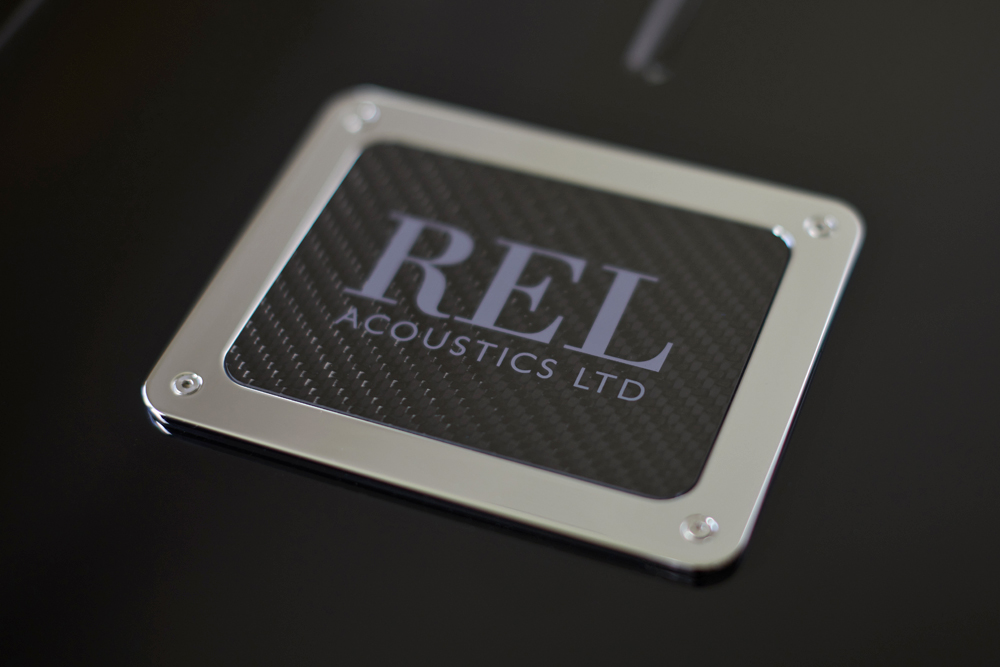
So, in come the REL No.31s (at last I hear you say) and simply put, they are big. Keep in mind that the cabinets of the 31 are 40% smaller than the No.32, and these are still quite the statement. What am I to expect of these? In Australia where I am currently, these are AU$12,999 each. Are they really that good? Well, the cabinets are an expensive affair, the timber being bombarded with RF radiation to plasticise the material and make it more malleable. Then, it’s put inside a jig that shapes the cabinets into a beautiful curvaceous sculpture which is then coated with 12 layers of piano black lacquer, before adding a REL plate on top in chrome and carbon, and a grille that was obviously meant for a Bugatti. These things scream quality, and exude such elegance, that the sheer size and weight of these things seems to become almost subtle. And that’s 52Kg per sub.
They are dramatic, beautiful, classic, and dominating, all at the same time, so sublimely articulate, that they must be experienced to believe. Subwoofers can often produce a debate almost as controversial as cables, but the practical effects are obvious. Subs used in home theatre are required to produce effects, drama, earth-shattering emotional events, and these bad boys will certainly do all of that. However, the 31s are meant for much more.
The way they handle music is utterly moving, emotionally engaging, and beautifully immersive. Setting these up in my system took all of about 20 minutes. There were of course a few minor adjustments after a few listens, but quite frankly, these must be the quickest subs to set up, that I have yet experienced. A subwoofer in a high-end music system, is meant to be subtle, expansive, and effortlessly and invisibly integrated. You should not know that there are subs in the system, until you switch them off. They are there to do one thing, and one thing only: complete the picture. They should not paint a picture of their own, nor steal the limelight from the rest of the show, they should be perfectly blended into the spectrum as a perfectly comprehensive presentation. One team.
I have had these in my system for a few months now, and yes, the run-in has changed the experience a little, but not much has had to be tweaked. Now, I have two of these at home, so why would that be important with such a large sub at such a high price point? Sound reinforcement. No matter how good your sub, one sub in one physical location, will almost always leave you with dips in the room, where the bass extension just isn’t there. Your room is always the most important part of the equation. So, two subs help to create a uniform coverage, and no matter what we believe about bass being omnidirectional, it isn’t quite so. There are many neural cues at the lower registers that give us a deeper sense of spatial awareness, stereo imaging, and positioning than we may be aware of. Two subs allow all of this to be conveyed.
Depth Charged
So, what is the subwoofer actually doing, with regards to music, that would justify the investment, and what does the REL No.31 do better than the rest? Well, subs fill in the lower registers, the last two to three octaves of the ten octaves that are audible to humans. Without a sub, these parts of the spectrum simply are not there, but with them in place, we must be careful as to how we integrate that part of the spectrum into our system.
The REL No.31 features an in-built 900 watts NextGen 7 Class-D amplifier driving a 12 inch (300 mm) carbon composite driver with a 3 inch voice coil and a 6kg “magnetic structure”. The amplifier is the same 1000 watt amp that drives the 15 inch driver (350 mm) of the No.32 but limited a little to preserve its lifespan. So, there is plenty of power to drive these giants. The No.31 delivers -6dB at 17 Hz, which is enough to shake you out of your boots should you feel the need to dial that volume knob up! So, the 31s have enough power in reserve to keep up with even the most demanding of playback scenarios.
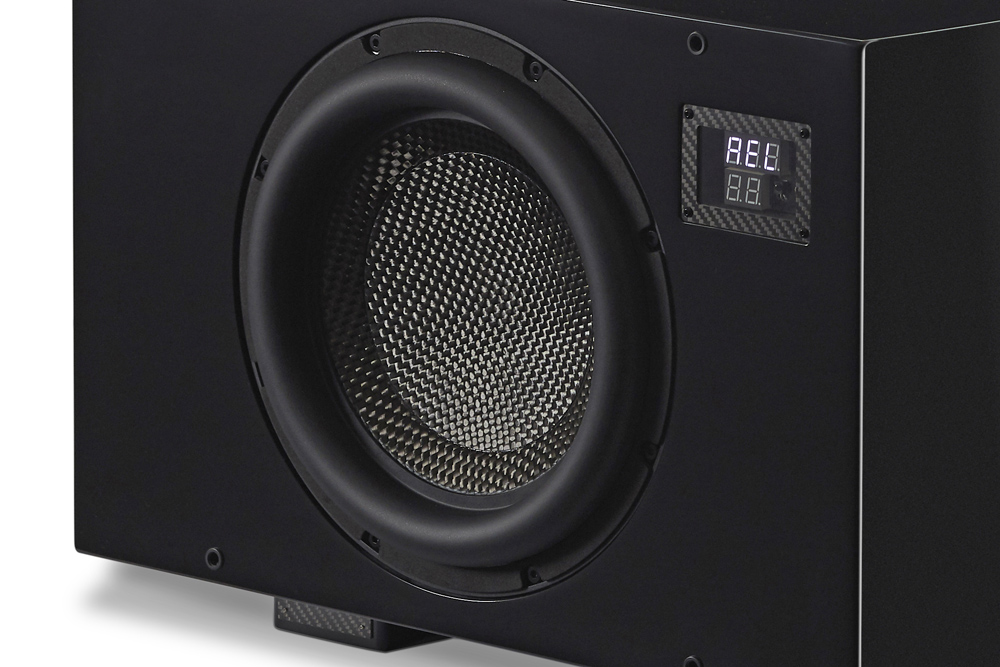
Aside from the preferred high-level Speakon input and output, the No.31 does offer XLR and RCA Left/Right inputs, an XLR output, an LFE output also via XLR and LFE inputs via RCA and XLR. The luxurious remote control provides access to all functions including the dual Parametric Filter (also a toggle switch on the 31’s rear panel). There’s also a Standby/Always On switch and the No.31 is compatible with REL’s AirShip II wireless connectivity system.
So, what about performance? It’s just a sub, right? There’s just something you can’t put your finger on when it comes to bass, a warmth, a subtle power, an embodiment of completion with regards to a sonic landscape, or indeed the complete delivery of an emotional message and a powerfully produced song. Something that wasn’t there before, simply is now, and all is right in the world. The involuntary grin that finds itself adorning your face when everything sits just right? You know that one? Well, that has been here to stay for quite some time now.
Subs need to be understood from several perspectives to integrate them properly. For home theatre, yes, we need all that drama, multiple units at all places in the room, aggression, fast attack, and power that digs deep. But with music, there’s an almost too subtle line to cross, that ruins the experience, with over enthusiastic listeners cranking the gain to replicate their late teen’s experiences in an illegal rave, explicitly proclaiming how their underwear needs changing. But therein lies the issue. To paint a picture of how a song should sound, and feel, and move you, you need a master.
You must understand the incredibly delicate art of balancing the moment the frequencies that leave your main speakers, meet the foundations of the image, being powerfully, yet gently created from the subs. They must meld together in harmony, embrace each other like two lovers who have always meant to be, to grace your presence like Ginger Rogers and Fred Astaire, dancing with a knowledge of each other, that only true professionals who have perfected their art together can. They must always remain within this goldilocks zone, and never stray from it. For this is where utter bliss exists. There are so many variables that exist to affect this, from the room, the power available, the cabinet design, etc. But once you have this mastered, your experience will never be the same.
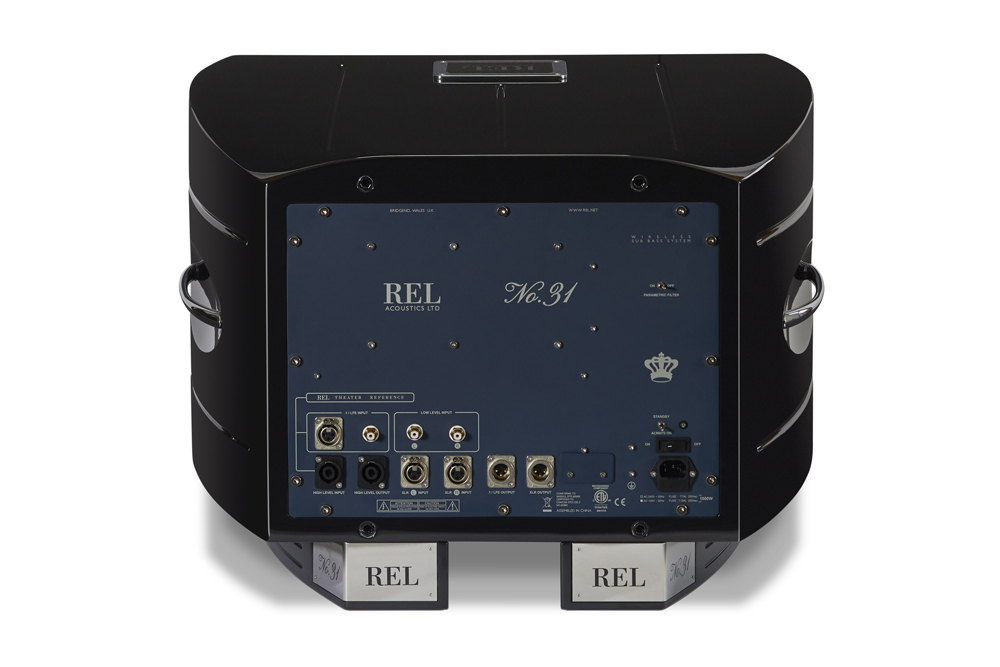
A sub is not an accessory, it is simply an essential part of creating the entire experience, and without them, there will always be two to three octaves missing. The issues most people face isn’t with the subwoofer, but with the way it’s integrated, or indeed chosen. If you leave it until last, as an afterthought, a little chump change to tack on, then you have missed the point entirely. The two very first things you must start with when curating a system, are the speakers and the subs (after treating your room of course). Every other component should be chosen to feed that front end, after all, the room will interact with the transducers, not your source.
Audible Magic
This review has taken me way longer than most, simply due to the nature of the beast. New subwoofers, the need for run-in time, and variables that may occur after listening for an extended period. Yes, the subs do benefit from being run-in. How many hours? I’m not sure anyone can truly provide an accurate timeline for these things. I do remember the day I became aware of some differences in the sonic presentation and adjusted the output gain a little. How much? By about one on the level indicator.
As mentioned above, the subs come with a remote. The very stylish disc shaped remote provides crossover frequency, gain, and phase adjustments. You can also lock the remote to prevent accidental changes, and there is a subtle LED indicator on the top right of the sub, to show what you have these set to. The display comes on when you power the subs on, and then turns itself off after a few seconds to prevent becoming a distraction.
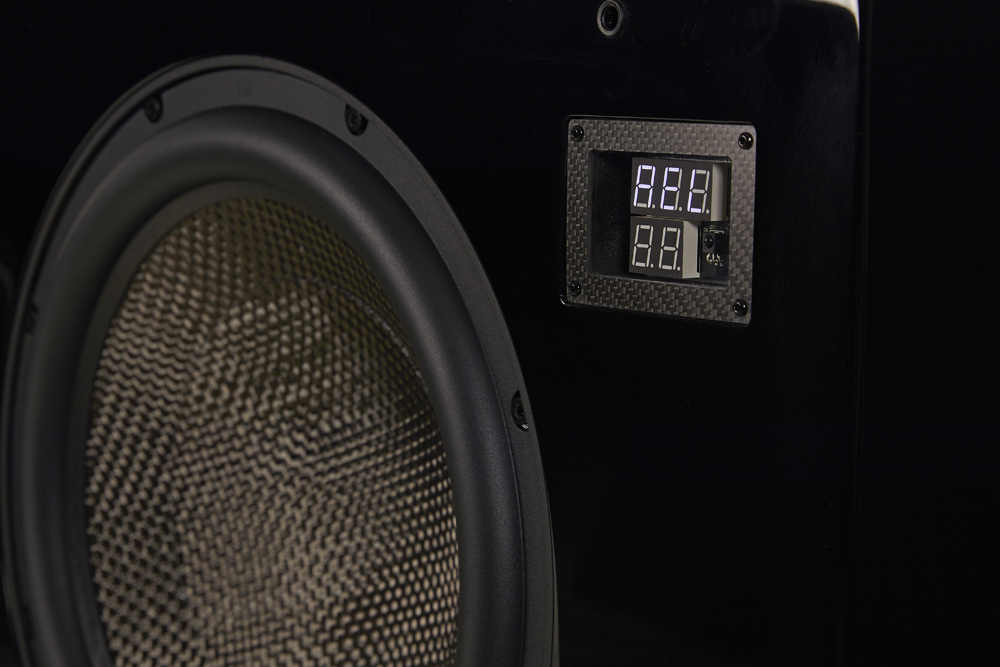
I listened to all the usual reference material with a new-found sense of immersion. Supertramp’s, “The Logical Song” presented with a real extended depth, with the toms having a new sense of depth, while resonating more naturally and with greater dimension than I had ever experienced. The sense of realism to the instruments is simply breathtaking.
Listening to Christopher Cross’ first album brought a real sense of joy and emotional insight, with songs such as “Sailing” becoming utterly captivating, while “The Minstrel Gigolo” just enthralled with its expanse of acoustic dynamics, extended harmonies, and production sensibilities.
I delved deeper (pardon the pun) and threw in a little Cohen, with “You Want It Darker” suddenly taking on a completely new vision. The depth of Leonard Cohen’s vocals on this track are simply unimaginable without the REL 31s. I have honestly never heard this track create such impact on any other system. I, in fact, was visiting another audio retailer after I had been listening to this track, and they played it though a very high-end system, and it simply did not come close. Everything was missing, and the sense of disappointment was quite confronting.
The 31s handle more aggressive music extremely well, with tracks from electronic artists simply exploding into the room. Everything from Daft Punk to the Beastie Boys, Rage Against The Machine, to Nine Inch Nails, all seemed to espouse an energy I just hadn’t felt before, except perhaps at a live show. Dua Lipa’s “Don’t Start Now”, was a real surprise, with the soundstage exploding across the room, and the bass driving an absolutely, relentless sense of purpose.
Robert Plant’s Fate Of Nations is enormous with the RELs, and songs such as “29 Palms” commanding such power that you would be mistaken for thinking the band had showed up and turned everything to 11.
But the 31s don’t just fill the room with power and authority, the picture is complete even at low levels. Quite simply, if you turn off the 31s at what may be considered background levels, you will notice that they are not present.
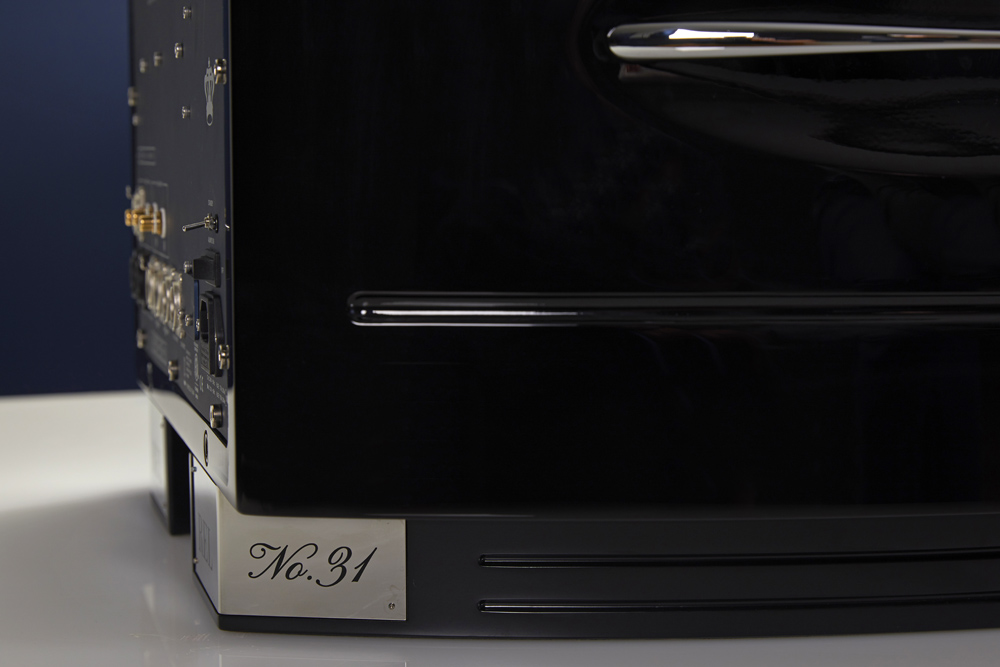
All subs will improve the overall sonic picture if integrated correctly, and the stereo image should indeed be greater, more expansive, immersive, and simply complete. But! There is something else the REL No.31 offers. The mystique of the unexplainable. The quality of the bass. The extension. The “why can’t I put my finger on it” moment. There’s just something about the way the low-end extension is so pure, effortless, almost unreal. The bass is relentless when it needs to be, yet never for even a split second, is anything out of control. Everything is balanced. The depths just seem to be pushed further and further, like a supercar when it revs to the top of its gearing and suddenly shifts up again to just keep delivering power, pushing the speedometer even higher, and somehow never running out of power, to keep pushing you back in your seat, while the road runs out before you can seem to reach that elusive limit.
This is exactly what the REL No.31 does, but not just with regards to power, or depth, but also with subtlety, with grace, with effortless immersion, extension beyond expectations, and an ability to paint a picture like so many colours were missing previously. It is indeed wonderous. And think… You can stack three of these per side, and drive six of them at the same time, in two intimidating stacks!
There are many ways to enjoy music, indulge in this great hobby and profession of high-end audio, music reproduction, and sharing the excitement of building a great system. I will however say this. If you are in the camp that subs are not required, or that they produce interfering frequencies above that at which they are crossed over, then you must take the time to revisit the mighty subwoofer. Change the approach, and make the subs as mush a priority as your main speakers. Buy two, not one, and give them a heftier percentage of your overall budget. I guarantee you, that you will never look back. Subs, especially at this level, will change your listening experience for life.
Conclusion
How much did I enjoy the REL No.31? I bought it. In fact, I bought two of them. Yes, money in mouth. They are that good. Apart from great acoustics, sub woofers may be the single biggest improvement you will make to your Hi-Fi. And then, there are the REL No. 31s.
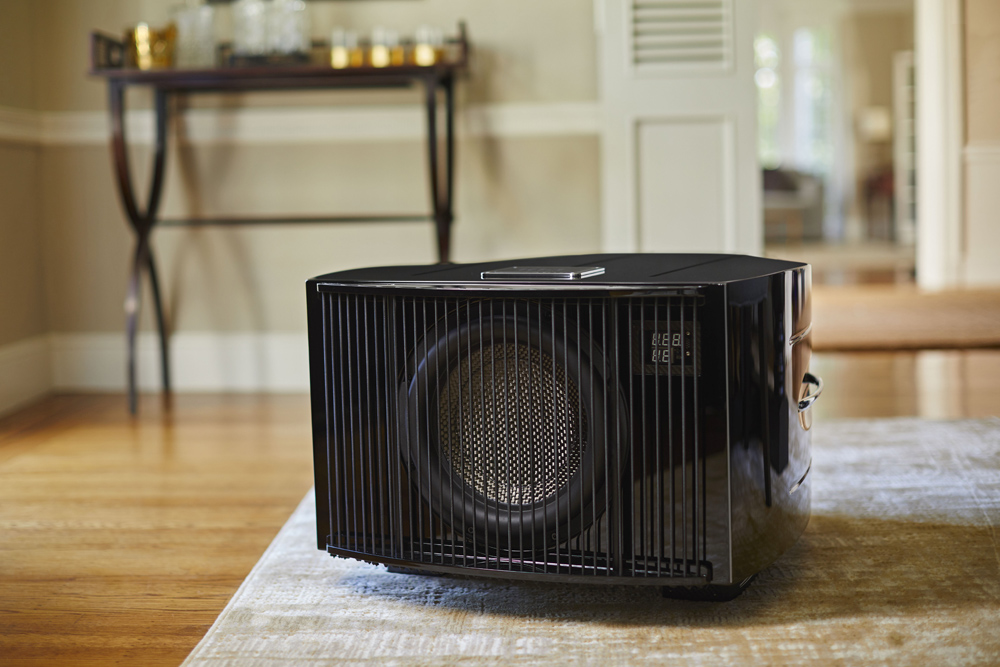
There are so many more things to say about these and, to be honest, I could wax lyrical all day about them and would be happy to do so. REL has really created something magical with these. I am almost lost for words regarding their level of performance and build quality. The engineers and designers at REL Acoustics have created a masterpiece. Thank you.
… Barry James Johnston
www.soundstageaustralia.com
Associated Equipment
- Speakers — Bowers and Wilkins Nautilus 802, Yamaha NS1000 – 2 Pairs – Modified, KEF LSX, REL HT1205 x 2, JBL 4328 LSR, Sony subwoofer, 2 x REL Acoustics No.31 subwoofers
- Amplifier — Mark Levinson No.531H Monoblocks, Quad 606 Power amp, Sansui AU555 Integrated
- Preamplifier — PrimaLuna EVO 400
- Sources — Digital:Gryphon Scorpio, Simaudio Moon HAD230, Marantz PMD-340, (MacBook Pro 15 - Audirvana, Tidal, Spotify) Sony PHA3, Sony NW ZX2, Sony PCM2600
- Analogue:Marantz TT-15S1, Clearaudio Satisfy Tonearm, Clearaudio Virtuoso Wood MKII, Whest P.20, LINN LP12, Stax UA7CF Tonearm, Audio Technica LPW40WN
- Cables — Nordost Frey, inakustik Exzellenz Balanced interconnect, Isotek IEC, various custom interconnects
- Audio Rack — Custom – Noizy Head , Noizy Head custom iso platforms
- Miscellaneous — Audio Technica AT-AWAS, Focal Listen, Audio Technica MSR7, Mac Pro, Focusrite Scarlett 18i20, Vicoustic room treatment, and various supporting cast
REL Acoustics No.31 Reference Series Subwoofer
Price: AU$TBA
Australian Warranty: Three Years
Australian Distributor: Synergy Audio
+61 3 9459 7474
www.synergyaudio.com
REL Acoustics, Ltd.
North Road
Bridgend Industrial Estate
Bridgend CF313TP
Wales, UK
+44 (0) 1656 768777
https://rel.net



